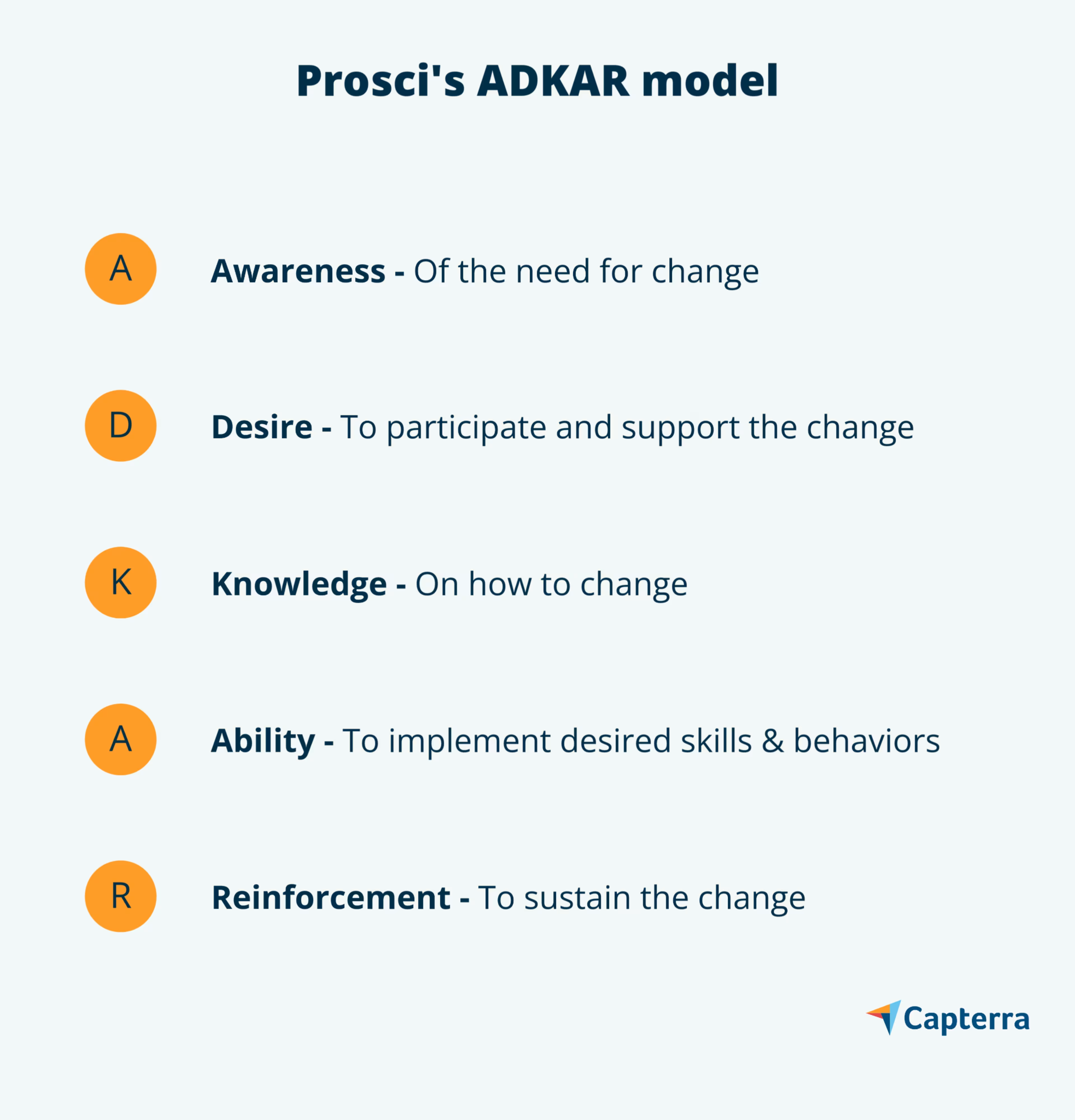Prepare your nonprofit or organization for change with these tips.
Capacity-building efforts at nonprofits often focus on program design and delivery, revenue and resource development, research and evaluation, community engagement, and operations.
One area commonly missing from intentional capacity-building efforts, however, is change management.
Change is a constant for nonprofit leaders and organizations. That change may be intentionally created by organization leadership—for example, when introducing a new customer relationship management system or moving to a new remote or hybrid approach to work—or it can be the result of unexpected circumstances. In either case, managing change can be the difference between a nonprofit achieving its goals or struggling to adapt to new realities.
What is change management?
At its core, change management is helping people embrace and carry out a new way of working. While change management is sometimes confused with or combined with project management, they are two distinct but complementary practices.
Change management recognizes that the successful implementation of a new plan, process, tool, or way of working relies on people. It recognizes that you cannot simply make a change, communicate it, and then expect it will be adopted. Instead, change management emphasizes the importance of preparing people—and the work environment—for change, and then providing the proper tools, training, and support to help them change the way they work on an ongoing basis.
Change management focuses on key questions such as:
“Who will be the vocal champion for this change?”
“Who will be early adopters of this change?”
“Who may be resistant to this change?”
“Who needs to be informed of this change and when?”
“Who will communicate about and train staff on this change?”
A model for change management
Change management is a robust discipline with a number of different models, tools, and approaches. For most small and midsize nonprofits, it may not be realistic to adopt a full-scale change management approach, but understanding and adopting the basic principles of change management can go a long way to helping your organization evolve and grow.
According to Prosci, a change management research and training organization, organizational leaders often communicate that a change is happening, but they forget to help employees understand why it’s important for the organization to make this change and how to successfully implement it.
Prosci’s ADKAR model emphasizes five key stages. By understanding these stages, leaders can focus their activities on what will drive individual change, which in turn leads to organizational results:

When working with leaders on change initiatives, talk about which stage of this model their teams or certain key players may be stuck on and how to address the key questions, concerns, or resistance behaviors that may come up.
A three-step cycle for managing change
Change management does not always have a distinct beginning, middle, and end, like project management, but it does tend to follow a three-step cycle of preparation, implementation, and continuation.
1. Preparation
The most important time-specific element of preparation is identifying a change leader or executive sponsor who will be a vocal advocate throughout the change. A vocal and active sponsor is the number-one determining factor in whether a change succeeds or fails, according to Prosci.
In many cases, the change leader will also need a change team. This should be a cross-functional group with people who represent the department or function where the change is taking place, employee communications, training, operations, and any other staff whose leadership is important for the specific change being pursued.
Preparation also requires a clear vision of what success will look like when the change is implemented. If you don't articulate this vision ahead of time, change efforts can get off track, or leaders may experience a sense of unmet expectations.
tip
Try answering these questions to articulate your vision:
“What will our organization look like when we’ve successfully completed this change?"
"How will things be different or improved?“
Remember that the improvement or difference may have to do with the specific way of working the change is bringing—e.g., using a new CRM to track donor relationships —but it may also have to do with how the staff feels after the change. Will they be less frustrated or feel more prepared to do their work? Envision that future now so you can determine which aspects of the change are most important to measure and track.
Key elements of ongoing preparation include developing strong internal communication and training practices within the organization. If your organization does not have a dedicated internal communications or training function, it is important to develop clear expectations for how different teams will work together to support these essential elements of change management.
As you build your specific communications and training plans for the change at hand, remember to consider the ADKAR stages above. Communications are critical in increasing awareness of the need for the change and the desire to participate in the change. Training is needed to increase the team’s knowledge and ability to carry out the change.
2. Implementation
Change implementation is where plans turn into reality.
In this stage, the executive sponsor and team that are managing the project and the change work together in close coordination to bring the staff along for every step of the journey. For smaller changes, this may be a relatively short process, but for long-term changes, this effort can take months or even years.
During this stage, knowing who is the best messenger for different kinds of communication can influence change acceptance and adoption by the team. Research shows that big-picture messages about where the organization is headed should come from the CEO/executive director or the executive sponsor. Team members want to know that leadership has a clear vision and perspective for the future.
While many team members may feel positively about the change, it’s important for leadership and supervisors to understand that all change creates some kind of loss—and that loss can lead to grief. Organizations can adopt meaningful practices to honor loss during change to help teammates feel ready to embrace something new.
Throughout the implementation stage, the executive sponsor and change team should be meeting regularly to discuss how the change is going, whether there are challenges that need to be addressed, and how best to keep the change on track.
3. Continuation
For a change to take hold, an organization has to practice it over and over again. Too often, leaders abandon a change effort during the implementation stage or shortly after because they expect instant results from a new tool or process. But team members and leadership need time to practice, refine, and perfect the new way of working.
Keeping the energy and momentum around a change requires work from both the change team and the team implementing/adopting the change. While the cross-functional change team is essential for the initial change period, they often will need to transition ongoing communication, training, and operations to the department that will own the new system or process that was introduced.
During this transition, it is important to:
Clarify ongoing ownership: Ensure the team that is now responsible for the ongoing success of the change has both the authority and capacity to follow through.
Review how the change activities went: Discuss which practices worked well and which can be improved for the next change effort. If something needs to be addressed now to increase the likelihood that this change will stick, decide who will do it.
Determine an ongoing cadence for communications: Consider both informational and inspirational messages. Showcasing success stories of how the new process, tool, or way of working is helping the team in employee communications can help team members feel this change has made their work easier or better.
Embed the change in onboarding and training programs: Any new way of working will now become your organization’s “way of doing things” going forward. Ensuring your employee onboarding program and training are updated to incorporate information about this change (as appropriate) is an important step that will make continuation of the change much easier.
4 steps you can take today to build your change management skills
Change management can feel like a significant undertaking – but it doesn’t need to be overwhelming. The best time to get ready for your next change is now, and there are some practical ways you can get started.
Start identifying executive sponsors or team leaders: Make it a regular practice to identify an executive sponsor, team leader, or owner for key projects. This does not always need to be a member of the leadership team, but the leadership team should be supportive of this leader and give them the authority to make important decisions. By getting used to identifying this role now, it will make it easier to follow the same practice for your next big change.
Invest in your internal communications: Many nonprofits underinvest in internal communications or consider it secondary to external communications work, which is a big mistake. Establish an internal communications function and plan, and then consistently deliver on it. When it comes time to introduce an important change, you’ll already have important communications channels established and team members will be better prepared to consume the communications you’re sending.
Level up your leadership: Help your leaders practice effectively communicating with their teams by adopting this approach into ongoing work when there is new information or an announcement being shared: First, ensure the executive director or CEO shares messages about why the organization is doing this in a regular communication—an all-staff meeting, a regular CEO email to staff, or a regular column in your employee newsletter.. Then, have department and team leaders practice sharing what the news means for the team. Encourage these leaders to think of the three key messages they need to share to help the team understand their role (if any), how it will change their work (if at all), and what they can expect next.
Document and train: Take the time to document how your organization works now and create appropriate training to onboard new team members (or team members who move into new roles). There is often a gap between how leadership thinks the organization operates and how it actually operates in practice. Consistently documenting and creating training on the way things are intended to work can improve the chances team members will effectively adopt those practices and improve continuity in times of turnover.
Need help finding the right change management software?
As you think about how you’ll build capacity in your organization this year and beyond, incorporating change management into your priorities can help improve your mission, financial and operational success, grow your leaders and teams, and make you an effective and healthy organization to support the people you serve.
Are you interested in becoming a guest writer for Capterra?
Reach out to guestcontributors@gartner.com for details.
